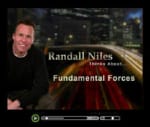Creation Evidence
Creation Evidence - The Great Debate of Origins
Creation Evidence is sought by Creationists to discredit Evolution, not to validate Special Creation…
It is agreed on all sides that there are only two possible solutions to the riddle of origins. Either Someone made the world, or the world made itself. A third option, the world is eternal and without origin, contradicts Natural Laws such as Thermodynamics and has been disproved with mathematical certainty in the 20th century. As the universe is obviously complex and seemingly well-designed, a Designer should be the scientific default. In everything we observe today, concept and design are the result of a Mind. Furthermore, Natural Laws such as Gravity, Inverse Squares, Cause and Effect, and Thermodynamics imply a Law-giver.
Unless a natural mechanism constrained by Natural Law, by which the entire universe could come into existence and further develop through random process, is found, a Creator must be the theoretical default. It doesn't matter whether an individual scientist has difficulty accepting it or not. As Sir Arthur Conan Doyle so eloquently stated in his Sherlock Holmes series, "Once you eliminate the impossible, whatever remains, no matter how improbable, must be the truth."
Creation Evidence - A Few Brief Examples:
- Lack of Transitional Fossils. Charles Darwin wrote, "Lastly, looking not to any one time, but to all time, if my theory be true, numberless intermediate varieties, linking closely together all the species of the same group, must assuredly have existed. But, as by this theory, innumerable transitional forms must have existed, why do we not find them embedded in countless numbers in the crust of the earth?" (Origin of Species, 1859). Since Darwin put forth his theory, scientists have sought fossil evidence indicating past organic transitions. Nearly 150 years later, there has been no evidence of transition found thus far in the fossil record.
- Lack of a Natural Mechanism. Charles Darwin, in his Origin of Species, proposed Natural Selection to be the mechanism by which an original simple-celled organism could have evolved gradually into all species observed today, both plant and animal. Darwin defines evolution as "descent with modification." However, Natural Selection is known to be a conservative process, not a means of developing complexity from simplicity. Later, with our increased understanding of genetics, it was thought perhaps Natural Selection in conjunction with genetic mutation allowed for the development of all species from a common ancestor. However, this is theoretical and controversial, since "beneficial" mutations have yet to be observed. In fact, scientists have only observed harmful, "downward" mutations thus far.
- Time Constraints. Both Creationists and Evolutionists agree that if evolution is at all possible, there needs to be an excessive (if not infinite) amount of time. For much of the 20th century, it was thought evolutionists had all the time they needed. If the earth ever looked too young for certain evolutionary developments to have occurred, the age was pushed back in the textbooks. In 1905, the earth was declared to be two billion years old. By 1970, the earth was determined to be 3.5 billion years old, and by the 1990's, the earth had become 4.6 billion years old. However, Young Earth advocates have identified quite a few Young Earth chronometers in recent years. Currently, there are approximately five times more natural chronometers indicating a "Young Earth" than an "Old Earth." Each discovery is a separate "Limiting Factor" that places a constraint on the possible age of the earth. For example, moon drift, earth rotation speed, magnetic field decay, erosion rates, chemical influx into the oceans, ocean salinity, etc, all constrain the possible age of the earth. Each Limiting Factor is distinct. If one were successfully challenged, there is still the problem of all the rest. Furthermore, there are Limiting Factors constraining the possible age of the universe, such as spiral galaxies where they're maintaining their spiral shapes despite their centers spinning faster than their extremities.
- Unacceptable Model of Origins. The Big Bang Theory is the accepted source of Origins among the majority of Evolutionists, and is taught in our public schools. However, the Big Bang does not explain many things, including the uneven distribution of matter that results in "voids" and "clumps," or the retrograde motion that must violate the Law of Conservation of Angular Momentum. Furthermore, the Big Bang does not address the primary question at hand, "where did everything come from?" Did nothing explode? How did this explosion cause order, while every explosion observed in recorded history causes disorder and disarray?

